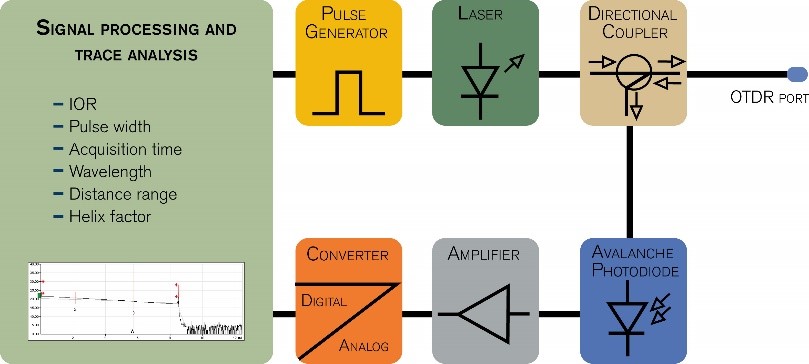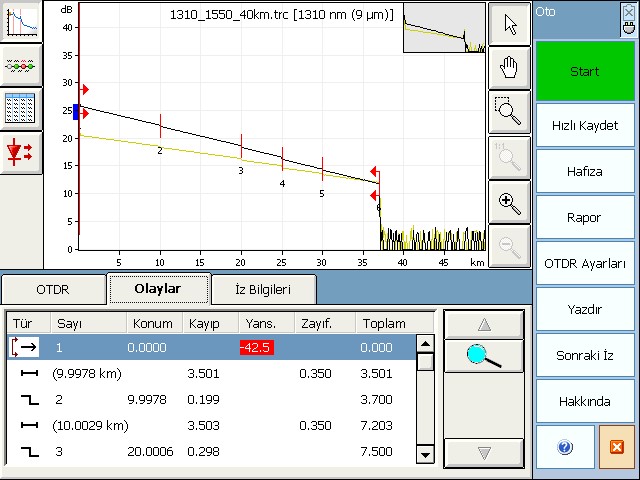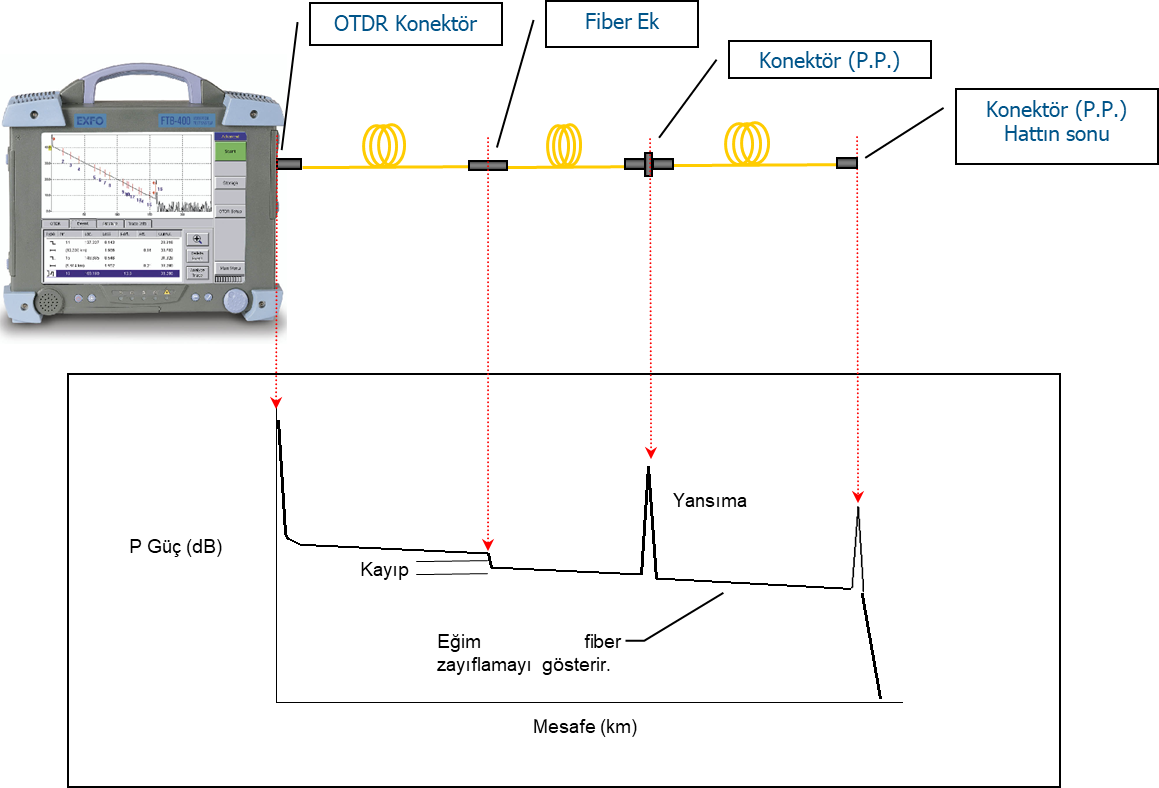
24 June 2020
Fiber Technology
Significant increases in both broadband subscriber numbers and data communication traffic have been recorded, especially with the rapid spread of 4.5 G in 2018.
At the end of 2018, a total number of 74.5 million broadband internet subscribers, including 13.4 million fixed subscribers and 61.1 million mobile subscribers, reached 8.2% increase compared to the previous year. The biggest share in this increase is the growth in Fiber Internet, which has increased approximately 19.9%.
The length of fiber optic cable across Turkey during the period 2014-2018, has increased to 355 thousand kilometers increased by 56%.
OTDR devices are designed to facilitate installation and maintenance by allowing technicians to know where cable losses, splices, ports, and potential errors occur in increasingly common fiber cabling systems.
What is OTDR?
OTDR (The optical time domain reflectometer): In the optical time domain, the reflector provides an analysis report in fiber optic cables by verifying the loss of fiber insertion, measuring its length and detecting the cable breakage, if any, by characterizing the fiber optic cable.

Figure 1 Typical OTDR Block diagram
How does OTDR analyze?
OTDR uses Rayleigh scattering and Fresnel reflections to determine the properties of the fiber optic cable. Some of the light sent to the system from the output of the OTDR device returns. As the light scatters in all directions, some simply return to the light source along the fiber. The fiber cable is examined by analyzing this returned light by the OTDR device.

Figure 2. A typical OTDR trace and corresponding event table
A quality OTDR should be able to clearly show all types of events in the field so that the graphics can be easily identified by the user. For example, as shown in Figure 2, the EXFO OTDR application also enumerates the events (section and list) to enable users to quickly match the relevant measurement information included in the events.
For fiber characterization, the test equipment will need to measure / find the following key parameters:
Loss of input (IL): Loss of signal strength, expressed in decibels (dB), caused by the presence of an event in a fiber connection such as a splice or connector.
Optical return loss (ORL): Loss of signal strength from reflection caused by discontinuity in the optical fiber.
Optical connection length: The distance between the first network connector and the end of the fiber connection, including different events (connectors, fusion attachments, macro folds, etc.).
Fiber-based errors: Any event in an optical link that does not meet the thresholds required to perform pass diagnostics for a given measurement.

Figure 3. OTDR measurement trace
These measurements and error detection are performed by an industry using an optical time history reflector, often called an OTDR.
OTDR Test Basics
Dynamic range: Maximum optical loss that an OTDR can analyze from the backscatter level on the OTDR port to a certain noise level. It determines the distance that OTDR device can reach according to this loss.
Event dead zone: The minimum distance after a Fresnel reflection that OTDR can detect another event. In other words, it is the minimum fiber length needed between two reflective events.
Pulse width: the length of time the laser is on. It is the length of the pulse width as time is converted to distance. Also, if the pulse width is increased, the attenuation dead zone also increases, which limits the detection ability of other events after a first event.
Each OTDR reacts differently to the parameters mentioned above. Since field technicians do not work in laboratory conditions, they do not want to waste their time by determining the optimum configuration of OTDR, sometimes they are not authorized to access the correct parameters. Therefore, OTDR should be able to automatically optimize all necessary parameters to meet the user's needs. The effect of the signal-to-noise ratio on event detection and measurement quality does not disappear on its own, therefore suppliers such as EXFO always provide superior results to the user by ensuring that OTDR parameters are automatically optimized.
What should be considered when choosing an OTDR device?
Reliability and accuracy: The quality and high accuracy loss measurements are vital today for the Fiber Optic Infrastructure to support critical 5G and IoT services. OTDR is an important investment to ensure the reliability of fiber optic networks. For this reason, OTDR measurements need to be extremely reliable and accurate. In today's evolving communication environment, you can be sure that top class and reliable performance will provide the best return on investment. Low-grade OTDRs will lead to higher risks and eventually higher costs.
Simplicity and ease of use: Given the complexity of the OTDR test, query automated testing and result analysis. Intelligent diagnostics and intuitive visual displays can help the field team increase their productivity with minimal training.
Robustness and compact form factor: Look for ODTRs designed with ease of use and robustness in mind.
Choosing the right OTDR for your needs: Each application has specific testing requirements, so choose brands that you can get technical support.
Calibration and service support: Since OTDR devices need to be calibrated annually, choose companies that provide this service economically domestically.
For more information about our OTDR devices, you can refer to FOTECH's OTDR and iOLM product category.